Elementary Education
St Xavier’s School, Basahatu
St. Xavier’s Middle School, Basahatu run by Jamshedpur Jesuit Society is situated in Khuntpani Block in the district of West Singhbhum, Jharkhand. It was founded in 2001. It is a co-education school from class LKG to VI. In the session 2019-20, there were 1063 students. Every year after completing class VI, nearly 150 students go out from here. Most of them get admission in St. Xavier’s High school, Lupungutu; some girls go to St. Xavier’s girls school, Chaibasa and others go to Govt schools. St. Xavier’s school, Basahatu is a Ho tribe dominant area. 95% students studying here belong to the Ho tribe. Within the school campus, there are separate hostel buildings for boys and girls, a Jesuit residence and SRA Sisters’ convent. Apart from text book studies, there are various other activities conducted for the students. The school organizes competitions like quiz, essay writings, singing, drawing, debate, science exhibition etc. for them to discover their own hidden talents and abilities and also to express themselves. The school has its library and computer lab for the students to broaden their learning and knowledge. This institution is in the rural area and it is committed to educate children of this area and there are 20 qualified teaching staff working in our institution.
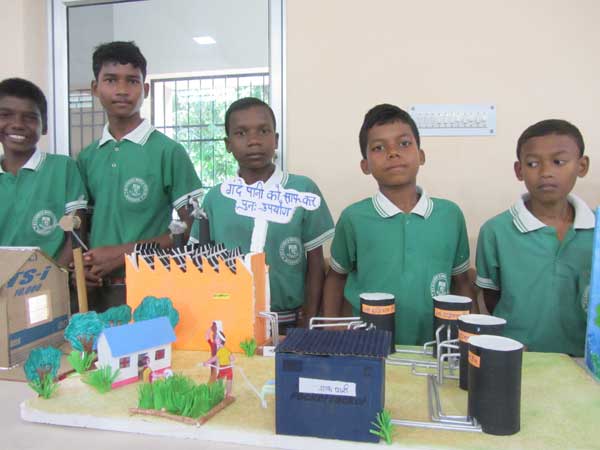

St Paul Miki School, Pandabir
Initially in the year 2000 St. Xaviers school Bordor was started by the local villagers themselves, to provide the better education and create better social ambience, but due to some unavoidable circumstances and finance, they could not continue farther, hence it had a natural death. Then people of locality approached Jesuits of Jamshedpur province and thus St. Paul Miki school came to it’s existence which is situated at the outskirts of Chaibasa , approximately 12 k.m. towards w. Singhbhum, khuntpani Block, Jharkhand.
St. Paul Miki School is the contribution of Jamshedpur Jesuits, situated at Pandabir village which is surrounded by Hos of Barkella, Bordor, Lagia, Nurgottu, Mundasai, Bondol gottu and Mukubasa. St. Paul miki school is catering to the overall development of the tribals of this area. Approximately twenty-five thousand (25,000) people, of which 95% Hos, and 5% other caste people resides. School is mainly catering to the educational, sociological, psychological, physical, moral, ethical and spiritual aspects of it which would enable them to be better, responsible and respectable citizens of this country.
St. Paul school has been situated by the road side next to the residential area. School consists of Nine classrooms from LKG to VI-STD onwards. It has five hundred and twenty-five students plus in it. We have ten lay teachers, one Jesuit, and two supporting staff. Adjacent to that, we have two Jesuits in the parish. We have around two thousand plus people in the parish. As per facilities concern, we have enough space for the students run around. We have one multi-purpose hall and a cycle shade to park the cycles. One thing has been noticed that without the hostel, there is no proper care and guidance can be given to the Children. And so value education is really missing. But people of this area has understood the meaning of education and so we have students from far and wide. It’s very encouraging and enthusiastic to see children coming far and wide, even when they are not well. That’s the spirit our young children have got. Praise the Lord.
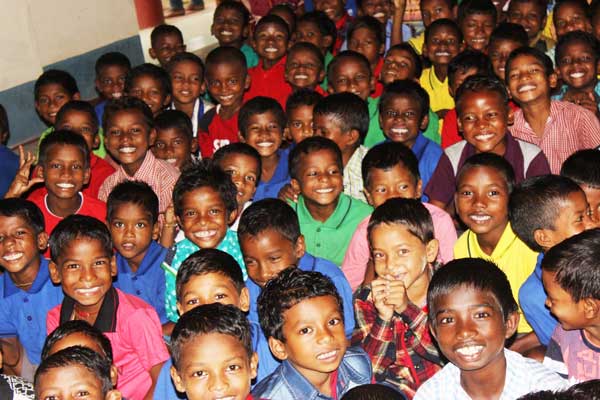
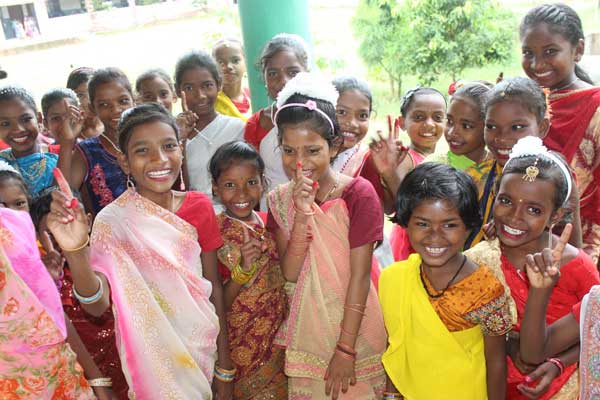

St Xavier’s School, Tundi
Tundi is the farthest most place on the map of the Jamshedpur mission. In January 1981, Bishop Rodericks separated the Tundi Santhal mission from St Anthony’s Parish Church, Dhanbad, and entrusted the Tundi mission to the Society of Jesus for development. In February 1983, the Bishop made Tundi the first Jesuit Parish in Jamshedpur Diocese. Besides full fledged parish, there is a congregation of Sisters who help the Jesuits run a school of 700 plus. There are 421 boys and 212 girls, out of whom 55 Catholic boys and 38 Catholic girls. The school has already reached the High School level and has brought laurels to the school in all forms of extra curricular activities.
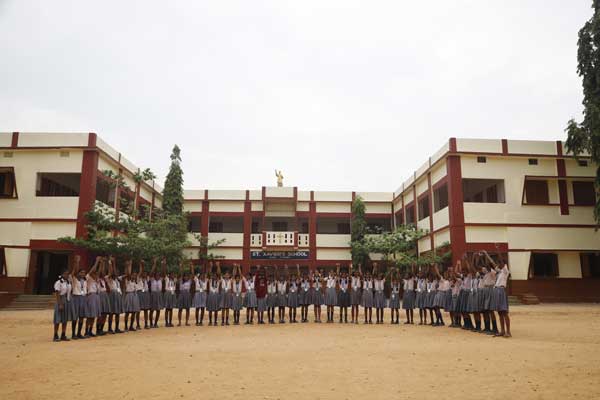
DNS English, Digwadih
In the early 1950s, the prominent people in the coalfield asked the Jesuit fathers of Jamshedpur Province to open a Cambridge school for their sons and wards. Jesuits were already running Loyola School, in Jamshedpur on the invitation of Late J.R.D. Tata. Fr. F.X. McFarland, S.J. an American Jesuit, was the pioneer, under whose able guidance, De Nobili School started in a rather humble way, in the unfinished girls school building at the Fuel Research Institute, Jealgora, (now Digwadih) courtesy of the then Director, Late Dr. Adinath Lahiri. It had 36 students and 3 teachers. The date was February, 1956. In 1959, a significant piece of land was handed over to the Jesuits by a reputed industrialist and philanthropist, Late Banwari Lal Agarwal and on 28 October 1959 the ground was broken for the new building. In 1960, with the help of Lions Clubs, an adjoining piece of land was acquired for further expansion. In 1961, the school shifted from its temporary quarters in F.R.I. to the unfinished new building. In 1963, while De Nobili was still in its infancy, Rev. Fr. George A. Hess, S.J. took over as the new principal of De Nobili School.
Over the years, under the able guidance and care of Fr. Hess, De Nobili School expanded both quantitatively and qualitatively. The requests from various Government concerns to open the branches of De Nobili in various parts of the coalfield, led to the opening of branch schools. In 1972, the first De Nobili School branch was opened in Central Mining Research Institute (CMRI), Dhanbad. De Nobili School, Sijua was founded on 22nd January, 1975 by Father Hess and its first Headmaster, Mr. V.J. Abraham. This school was shifted to its new location- Koradih in 2015. Other De Nobili school branches soon followed – Mugma in 1977, Sindri in 1987, Chandrapura and Maithon in 1988, Bhuli in 2009 and Gomoh in 2015.
The small sapling planted by Fr. F.X. McFarland, S.J. today has grown into a mighty oak tree. The contribution of Fr. G.S. Hess and his successors, like Frs. Eric Cassel S.J., Hilary Lobo S.J., Victor Misquith S.J., Flavian Topno S.J., M. Chandy S.J., Saleth Soosai S.J., Pius Fernandes S.J., George Fernandes S.J., Sebastian Puthenpura S.J., Sunny Jacob S.J., Amladoss S.J. and a host of dedicated teachers cannot be forgotten. This band of Jesuits and the teachers of De Nobili School have made a far reaching contribution to not just Dhanbad but to the entire country of India by educating young men and women during their formative years. Many of these young men and women are today serving their country as officers in the Indian armed forces, as doctors, engineers, businessmen, bankers, teachers, professors, educationist and information technology specialists.
Today, De Nobili F.R.I, Digwadih School has 2643 students and 78 committed teachers. In the De Nobili family with the Units schools taken together, there are over 17,500 students and 5oo teachers under one umbrella (De Nobili Jealgora Society). It is a remarkable effort to bring top quality education to the children of coalfield with the “Lay collaboration”.
http://denobilicmri.in/
http://denobilisindri.in/
http://denobilimaithon.in/
https://denobilictps.in/
https://denobilibhuli.in/
http://denobilimaithon.in/
https://dnssijua.com/
http://denobilifri.in/
https://denobilibhuli.in/contact/
DNS English, Bhuli
Tundi is the farthest most place on the map of the Jamshedpur mission. In January 1981, Bishop Rodericks separated the Tundi Santhal mission from St Anthony’s Parish Church, Dhanbad, and entrusted the Tundi mission to the Society of Jesus for development. In February 1983, the Bishop made Tundi the first Jesuit Parish in Jamshedpur Diocese. Besides full fledged parish, there is a congregation of Sisters who help the Jesuits run a school of 700 plus. There are 421 boys and 212 girls, out of whom 55 Catholic boys and 38 Catholic girls. The school has already reached the High School level and has brought laurels to the school in all forms of extra curricular activities.

DNS English, Koradih
De Nobili School, Sijua started in January 21, 1975 was found be sitting on a huge stock of coal underneath and in 2010 the BCCL asked us to either close or shift the school to some other safer locality. Consequently the Jesuits of Jamshedpur began to look for another location and in 2012 around 16 acres of land was purchased in Koradih village and by 2015 the Junior section was shifted to the newly built Junior School building in Koradih. Simultaneously, the work on Senior Section building continued and finally in April 2018 the entire school in Sijua was shifted to the new locality. The huge campus with imposing infrastructure stands as an oasis in the middle of a rural surrounding stands as a beacon of hope for otherwise an underdeveloped locality. Right now it has strength of around 1800 students and still has a capacity of accommodating another 1800.
De Nobili & John De Britto Schools, Gomoh
DE NOBILI SCHOOL, GOMOH is the 9th branch of DE NOBILI SCHOOLS in the District of Dhanbad. It is situated in the village of Jitpur. It was established in 2015 by Fr. Alexander, A .S.J. In 2018, Fr. James Tharaniyil, S.J was appointed as the principal of DNS Gomoh. The Inauguration of the school building was in the year 2019 by Fr. George Fernandes S.J, the Provincial of Jamshedpur Province. SISTERS OF ADORATION OF THE BLESSED SACRAMENT (SABS) has joined our mission in 2019 as collaborators.
The John De Britto school, Gomoh, a Hindi medium school, is an integral part of our Gomoh mission. This school is catering to the lower-income group. We give hostel facilities for economically poor students who are far away from Gomoh.
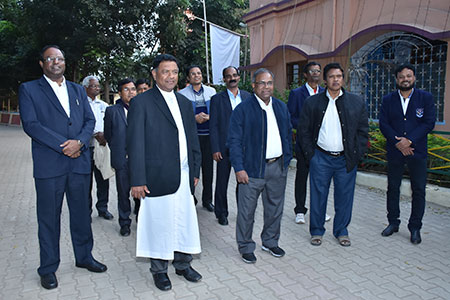

Loyola Hindi School, Jamshedpur
Initially it was going under the name of Loyola Coaching Classes, but in the year 2005, it became Loyola Project School with recognition and partial grant from the State Govt. There are over a little 300 girls and 400 boys studying here. Some of them have even qualified to represent the State in Basketball.
Loyola Odia School, BBSR
It is the fruit of the out reach program where students from the marginalized section study in the same campus as their rich city cousins. It is one way to get the creamy layer of society to share some of their wealth with those less privileged. It has nearly 1000 students. It is co-ed. It is unique to see the rich and the poor, receive their education, using all the facilities that were originally prepared for those who could financially afford.
Loyola School, Jamshedpur
This was the very first school established by the Jesuits of Maryland Province. The purpose of this school is to help us in the responsibility of fashioning and moulding our students to the stature envisioned by Loyola School in its motto: IN CARITATE ET IUSTITIA (In Love and Justice). At the end of 60 years of its existence, the school has earned for itself the status of a premier institution, having on its rolls over 3000 students. In 1990 after having been the “only” boys school in the city, it went co-ed, allowing girls to invade a male bastion. In the space of a decade we have 300 Catholic boys, 70 Catholic girls, and the rest are made up of 2000 boys and 700 girls from other denominations. The off shoot of all this is a very vibrant Alumni/ae Association that reflect the values learnt while at school. For the past decade it has been offering Arts, Science and Commerce at the Higher Secondary School level.
https://loyolajsr.com/
Loyola School, Bhubaneswar
The Government of Orissa invited the Jesuits to start an English Medium School in Bhubaneswar. Fr General gave permission to go ahead with the project. The Government offered 12 acres of land for the school. The much desired and talked about school in Bhubaneswar has come to exist. In less than a decade its class rooms are capacity filled with modern labs. It is co-ed. In a short span of time it has reached the Hiugher Secondary level and offers courses in Arts, Science and Commerce.
https://loyolabbsr.edu.in/
Loyola School, Chaira
This school is situated at the highway N H 33 which connects with south India. It is in the greener section of a rural population that has come to appreciate education that develops the entire person. The schools caters mainly to tribal and O. B. Cs. The number of students now about 800. It is in the last stage of recognition. It has spacious class rooms, play fields, hostels for boys and girls. A Sister’s Congregation helps the Jesuits to run the school and hostel. The cummunity has legal apostlate too.One of the members practices as an advocate in the local court.
Loyola School, Jilling
The project started in March, 1992 in Jilling Saborpara, where there are 23 families. There are 4 other places for Eucharistic celebration with a Catholic family or two in each. There was a time that this place nurtured criminals and those addicted to consumption of alcohol. With the arrival of the Jesuits, there has been a complete transformation. A school for boys and girls has been established with a little over 400 students.Out of 300 boys we have just Catholics and among the remaining girls, 3 are Cathoilic.
Loyola School, Telco
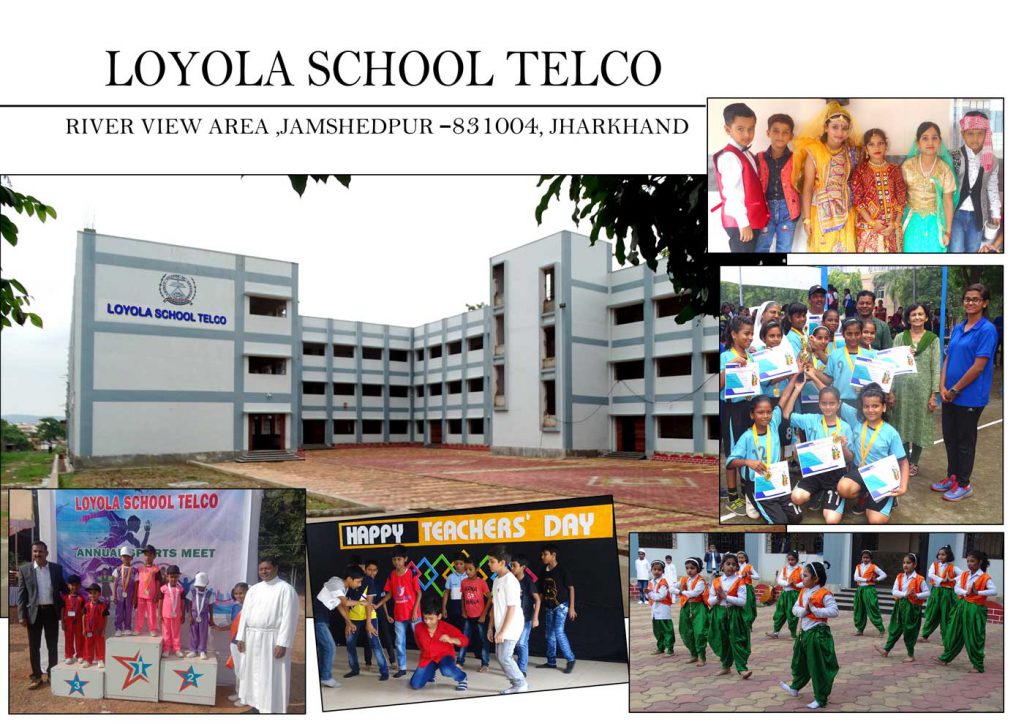
This school was officially started and inaugurated by then Chief Minister Mr. Raghuwar Das and Bishop Rt Rev Felix Toppo SJ on 22-02-2015. Fr. Sunil lakra was the man behind the growth of school and did the pionioring. School started with lkg students in Arrupe Bhavan, B,ed college girls’ hostel for two years..at same time the construction of the school building started and 2018-19 new session from march onwards classes lkg to std 3 was shifted to new school building though work was still in progress. Now we have Lkg to std 5 about 930 students with 35 teching staff. Fr Sushil suman SJ took over as Principal and Superior from 2 May 2018.
https://loyolatelco.com/
Loyola School, Pajikeri
Fr Victor Joseph and Sch Ajit Bahala started an Oriya Medium School at Pajikeri under Tumudibandha parish in 2000. It is about 38 kms away from Tumudibandha in Ghati section of the parish. Most of the Catholic population resides in this area. The school has reached the Middle School level and caters to both boys and girls coming from the thickly forest area.
Loyola School, Rerua
It is an off shoot of Loyola, Chaira and is just across the river. It has a little over 250 boys and girls and is still at the elementary level. Other than the education the Jesuits are actively involved in the social action ministries also.
Loyola School, Sankhabhanga
Fr Clement Kujur took much pain in searching, negotiating and registering the 26 acres of land at Laxmiposi village, which is about 8 kms away from Baripada on the National Highway No. 5. The local people popularly know it as the English Medium School. The future vision is to establish a Community College, offering not only education but vocational skills as well, where the medium of instruction will be in English
St Ignatius School, Rengra
This school was started in January 1982 by Fr Joe Kalathil, SJ, the parish priest of Jhinkpani parish at the time, with the purpose of making high school education available to the tribal children of Tonto block which is one of the most backward and undeveloped areas of Bihar. Tonto block covers an area of 389.3 sq.kms. and has a population of over 52,000 people living in 82 villages scattered between forests and hills. 78% of the population is tribal belonging to the Ho tribe among whom literacy is only 8.09%.
St Thomas School, Gande Dungri
St .Thomas High School Gandedungri is a private school, run by Jamshedpur Jesuit. It was born in 1999. The school is located in Gandedungri village of Gamharia Block, Sariakela Discrict, Jharkhand state. Financially it is a self managed school. Initially it was started in a miniature form catering to the needs of a local village committee. As time passed it grew from an elementary school to a High School with hostel facilities for both boys and girls. There are 671 students in the school of which 403 are boys and 268 are girls.
The primary aim of the school is to impart knowledge and to empower men and women to live a dignified life with self respect and with self dignity. The vision of the school is to establish a just human society where there will be an equality, justice and peace. Once a person is educated he/she becomes aware of human values and stands for justice. He/she begins to respect oneself and to respect others in the society.
St John’s School, Tepasai
St John’s Centre was founded on June 9, 1983 by Fr Antoniswami and Br Benedict Kichingia. From the very beginning an attempt was made to keep the life style of the men working there and the developmental activities in line with the culture of the people and their sensibilities. The Center is involved mainly in 3 apostolate (School, Hostel, and Parish). It had a Dispensary which was once a boon to the rural people in these distant places, taking good care of the people’s health. The school with a lot of legal hurdles is growing day by day. There has been a gradual increase of students every year. At present (2019) there are 960 students among these 180 are Christians. All the minimum requirements/facilities of an institute could be seen at the center.: Good power supply(having with inverter, generator, solar system(heater/power)), CCTv, Computer, Library, good water facility with 8 bore wells (4 submersible machine fixed) and 2 open wells. There are 240(boys 130, girls 110) children in the hostel. There are 135 double Decker beds(for 270children) which provide healthy sleeping facility for the hostellers. It has a flourishing parish with 9 village Mass Centers ,more than 2500 faithful. It has a beautiful, spacious prayer hall which can accommodate easily more than one thousand people.
St Xavier’s High School, LPG

In 1953 St Xavier’s High School opened in Chaibasa with the hope that it becomes a nursing ground for vocations from the four Singhbhum parishes. Thanks to the foresight and labours of Frs Blandin and Bingham, a plot was acquired across the river at Lupungutu. In 1955, Fr John Deeney became Headmaster of the High School. The laborious negotiations for the new property at Lupungutu were successful by early 1957. Building operations began the same year under the hand of Fr Walter Cook who later turned over this responsibility to Br Joseph Toppo of Ranchi.
With the passage of time, LPG, has grown by leaps and bounds. Spacious classrooms, well equipped science lab, a fantastic Drum& Bugle Corp, and sprawling play fields.It is offering Science and Arts at the Higher Secondary level. It is running a hostel for both boys and girls.
St Xavier’s School, Rutungia
Archbishop Raphael Cheenath, SVD, offered Rutungia land for the Jesuits to open a school. In 1995, two Jesuits, Frs Martin Lakra and Gregory Xaxa, arrived there and opened the school. The Government of Orissa has given permission to run the school without grants. With the passage of time this school has taken firm roots and has already sent up several batches for the State Board Final Examination. It has a separate hostel for boys and girls. A congregation of Sisters has been of immense help in helping with grooming the girls. Much evangelization is also undertaken through village Mass Centers and regular monthly training of catechists.
